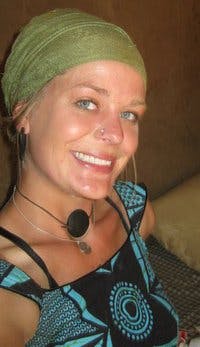Listen. Be Heard. Amplify. Connect. ACT.
Jan 21, 2015
First story
On the damp floor of a mud hut in rural West Africa, 40 km on a dirt road from the nearest phone, computer or radio tower, an 18 year old illiterate girl named Fatim is giving birth to her fifth child. Her tiny body has aged quickly from a succession of mostly unwanted pregnancies that she cannot, or will not prevent. She doesn't know the meaning of the words 'family planning,' or 'birth spacing'. This is not her husband's baby. Tomorrow, she will take her newborn into the bush, set it under a tree, and walk away.
There is no one holding a mic to Fatim's voice to let her be heard; there is no one reaching out to discuss her options and help her access resources. Yet.
Fatim is not one specific woman, but a composite of many I have met in over a year of volunteering in Dogon country, Mali, who do not have the tools, the freedom, or the education to connect with others in the movement towards self-empowerment, improved health and education.
But this is changing with Web 2.0, citizen journalism and social media. These revolutionary forms of communication and education are unique in that they are grass-roots, dynamic, real-time and universal. They give a far-reaching voice to people in the movement for women's empowerment who haven't yet had the opportunity. Web 2.0 enables women to connect with each other and to speak out, uncensored and to a boundless audience. It is the best medium yet to help bridge the gap between women who don't have the resources to advocate for change, and their sisters around the world who do.
Web 2.0 is empowering for me because it allows me to amplify the voices of people I work with here in Mali, to help them connect with and seek support from people across the world who share their vision. This is not a one-directional conversation; It is equally important for women coming from privileged places to join the conversation about global women's issues, and to understand how we are all essential actors in the movement to empower women. My work is to build the communications and networking capacity of women involved in Reproductive Health, Family Planning and Natural Resource Management. The organisation I work with helps women share resources, as well as use media tools both local and global to garner support. We are beginning radio shows in local dialects about family planning and HIV. We archive pedagogical tools used for trainings. These technological and communications skills are indispensable in empowering women to bridge that 40 km gap between Fatim and the nearest phone, computer or radio tower. But Web 2.0 is a tool that can bridge a much larger gap: I want to connect Fatim not only to the nearest town, but to women across the globe.




